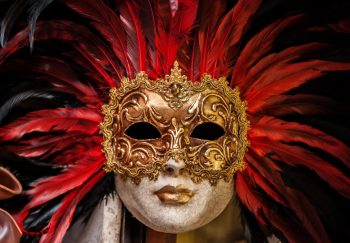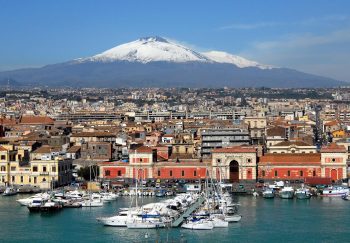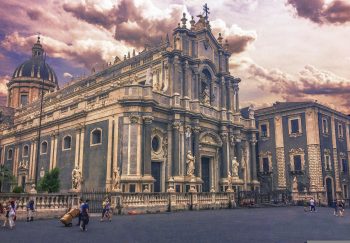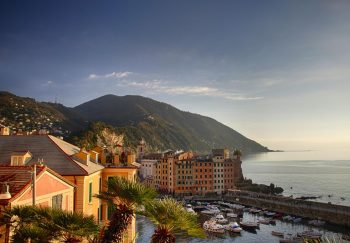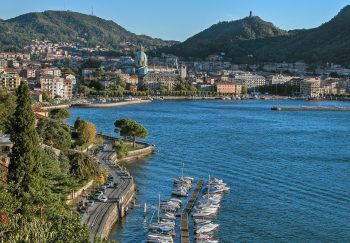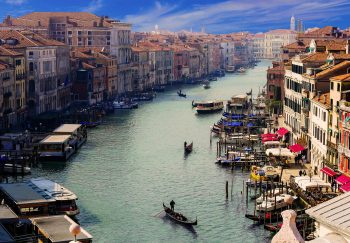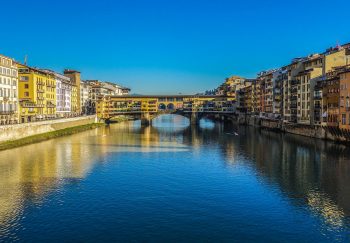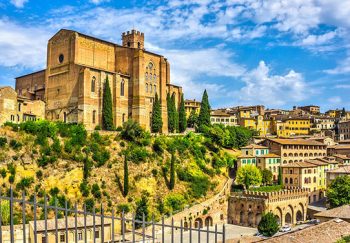Pope Julius II summoned a young, talented, but untested artist from Urbino to Rome in 1508 to fresco his library’s interior. He was called Raffaelo or Raffaelo Sazio but we call him Raphael.
He (and his workshop), dedicated the next ten-years to frescoes in Julius’ apartments. These frescoes would eventually give his name to the Raphael Rooms. The four spaces that Raphael’s frescoes cover – the Sala di Constantino (the Stanza di Eliodoro), the Stanza della Segnatura and the Stanza dell’incendio del Borgo — are considered to be the artistic pinnacle in the Italian Renaissance, along with Michelangelo’s ceiling at the Sistine Chapel.
Despite the fact that some frescoes have been valued higher than others because Raphael was more involved in the actual painting, all of them are among the most significant paintings in Italy and the world.
The Raphael’s Rooms
The Stanza della Segnatura
This is Raphael’s first room and it is also his most famous masterpiece. It contains 3 frescoes – the School of Athens and the Parnassus and Disputa – which together make one of the most impressive rooms in the Vatican Museums – particularly if you can decode the symbolism contained within each piece.
The Scuola di Ateni or School of Athens is the most well-known of all three. This incredible fresco brings together the best minds of antiquity in one scene that celebrates the union of science and philosophy. It is hard to find anywhere else in the world a more perfect representation of Renaissance ideals and form.
You may recognize familiar faces in this painting: Raphael is the one in the right, Leonardo Da Vinci is Plato in center, Michelangelo is Heraclitus at the bottom. Its beauty was instantly recognized by the Pope, who used it to sign important documents.
The Stanza di Eliodoro
Raphael shifted his historical perspective to the Room of Heliodorus and focused instead on glorifying the church. Raphael had painted four scenes from the Old Testament on his ceiling, but he was starting to rely on his pupils more. They would use detailed drawings he made to help him paint his work.
This technique was widely used by many of the most famous Renaissance artists. Michelangelo, who had no studio, is the exception. He produced far less than Raphael. Keep an eye out for Pope Julius. Raphael was close to the end of his life when he and his team worked on this room. However, that didn’t stop Raphael including him in all the frescoes.
The Stanza dell’incendio del Borgo
This room has a lot more church gloryfication, but you’ll also notice that the Pope’s figure changes. Raphael and his crew – to whom he was now entrusting most of the work – began working on the third room. Julius II had already died and been replaced with the Medici Pope Leo X. All the Popes depicted in these frescoes have been named Leo.
This is Leo IV extinguishing at the Borgo the titular fire with little more than a prayer, and conquering again the Saracens 849. This is Leo III crowning Charlemagne. The inconsistency in the work is one of the most notable features of this room. While some frescoes are worthy of Raphael’s finest, others are clearly inferior.
The Sala di Constantino
The Constantine Room, which is a room of inferior quality, is perhaps most well-known for being the ugly step brother to the first three. Raphael, who died mysteriously from a fever mid-way through the painting of it, was left behind by his students. They were using Raphael’s drawings as they did in previous rooms. However, it appears that they could not maintain his divine style without him. This room is now associated with Raphael’s tragically early death, as well as the end of the High Renaissance which would be demolished by foreigners a few years later.
Tips for Visiting the Raphael’s Rooms
Opening Times
Online booking is required for entry to the Vatican Museums. Beginning November 2, 2021
The Raphael Rooms can be found in the Vatican Museums. They are open Monday through Saturday, 8.30 a.m. – 6.30 p.m., with the last entry at 4.30 p.m.
The Museums will open on Friday 24 and Friday 31 December from 8.30 a.m. until 3.30 p.m., with the last entry at 1.30 pm. Visitors must leave the halls 30 min before closing.
For more information about holiday closings or special openings, please visit the Vatican website.
ClosedSundays 25th and 26th December (Christmas Day and St. Stephen’s Day); January 1, 6, February 11, 22, March 19, 28, June 29 (the Feasts Saint Peter and Paul); August 15, November 1; December 8.
Only a few tour groups like our Pristine sistine tour are permitted inside the Vatican before it opens to the public every day. Join our VIP VaticanKey Master’s Tour to unlock the Sistine Chapel and travel with him as he unlocks silent galleries and rooms.
Rules
You should be familiar with the rules of Vatican. Please read “Coronavirus”, procedures, and rules for visiting the Vatican Museums to ensure safe and enjoyable visits.
Note – Access to the Vatican Museums, and all areas related to them, is restricted to individuals who have a Green Pass CoVID-19 Certificate (or an equivalent certificate for non EU countries).
You can’t bring food or drinks into the Vatican Museums. You can leave your food or drink in the cloakroom, and they will be returned to you at the end. All food and drink left behind will be disposed off at the end each day.
The Vatican Museums prohibit the entry of bags, backpacks, suitcases or containers larger than 40x35x15 cm. You can’t also bring medium-sized umbrellas, umbrellas with spiked tips or camera tripods into the Vatican Museums. These items can all be left in the cloakroom.
The cloakroom is convenient for entering the Vatican, but not for exiting it. You must circle back to the entrance after you have left items in the cloakroom.
Visitors to the Vatican are prohibited from using firearms and they cannot be checked in Cloakroom. To protect the artwork, knives, scissors, and other cutting tools can be used but must be stored in the Cloakroom. This is a well-known precedent: Michalengelo’s Pieta at St. Peter’s Basilica was attacked by a madman with a hammer.
It is strictly forbidden to touch or alter artwork in the Vatican Museums. Also, no laser pointers.
Headsets are mandatory for all tour groups that have 11 or more participants. It is forbidden to use microphones or voice amplifiers. It would be impossible to hear your thoughts inside the Vatican if it weren’t.
The Vatican has a dress code. Both men and women must wear clothing that covers their shoulders and knees. Visitors may be able to wear a little less, but it is best not. Hats are not permitted.
Flash photography is strictly prohibited. Visitors are permitted to take non-flash photos in all Vatican Museums, except the Sistine Chapel.
You must get permission to draw in the Raphael Rooms.
Tickets
Adults EUR17; Senior/Child EUR8. Obligatory Online Booking For Tickets
When is the Best Time to Visit
May through September are considered the peak season in Rome. Easter is a minor exception. Expect crowds if you visit the Vatican Museums in these months. No matter what time of year it is, the best time to visit Vatican Museums is before the public opens. However, this can only be done through select tour groups. The Raphael rooms attract a little less attention than those in the Sistine Chapel, so if you arrive early you’ll have the chance to see them in relative calm.
How to get there
Metro or taxi is the best way to get to the Vatican Museums.
You should inform your taxi driver that you will be going to the Vatican Museums ( Vaticani Musei Vaticani) and not the Basilica of St. Peter, ( Basilica Papale di San Pietro di Vaticano), which is about a 15-minute walk from the hotel.
Metro A Line to Ottaviano stops if you are traveling by metro. Turn left at Via Tunisi as you exit the stop. You’ll find a set of steps at the end of the street. You’ll reach the top of the steps and will be able to see the Vatican Museums.
Don’t forget: If you are not on a guided tour with St. The Museums are not accessible to the Basilica of St. Peter. To visit it, you’ll need to exit the Museums and turn right. Follow the wall to St. Peter’s entrance. It takes about 15 minutes to reach the entrance.
